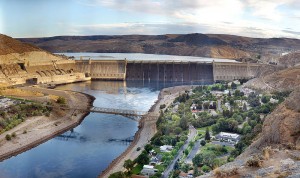Changes in water temperature and water availability will lead to more power disruptions in the next decades.
Ernie Hayden points out several often overlooked facts regarding electrical power generation in his Infrastructure Security blog.
Water is critical in electricity generation. Heat is generated by fueled power sources which spin the generators, whether combustion engines, coal-fired, nuclear, or other. That heat has to go somewhere. The primary coolant used in industrial power generation is water. Warmer water and diminished water flow reduce the ability to take that heat away which in turn reduces power generation.
Hayden points out a few examples of where warmer water or reduced water flow caused power degradation or complete shutdown:
* Millstone Nuclear Plant, Connecticut, 2012 — natural cooling water source (Long Island Sound) became too warm (almost 3 degree F ambient increase since plant’s inception in 1975). Plant shutdown for 12 days
* Browns Ferry Nuclear Plant, Alabama, 2011 — shutdown multiple times because water from Tennessee River was too warm
* Corette Power Plant, Montana, 2001 — plant shut down several times due to reduced water flow from Yellowstone River
Estimates of thermoelectric power generating capability are expected to drop by as much as 19% due to lack of cooling water. Further, incidents of extreme drops in generation capability, ie complete disruption, is expected to almost triple.
Keep up your scan
Much like flying an aircraft, we have ‘keep up our scan‘ when analyzing these system risks. These are complex interconnecting systems. We are becoming increasingly concerned about cyberattacks on electrical and smart grid systems. That attention is good and overdue, but that is only part of the puzzle. We have to train ourselves to constantly scan the whole system — just because there’s a big fire in front of us, it doesn’t mean that there’s not another one burning somewhere else.
For want of a nail the shoe was lost.
For want of a shoe the horse was lost.
For want of a horse the rider was lost.
For want of a rider the message was lost.
For want of a message the battle was lost.
For want of a battle the kingdom was lost.
And all for the want of a horseshoe nail.
[Image 1: Wikimedia Commons: Farwestern / Gregg M. Erickson. Image 2: author’s]



